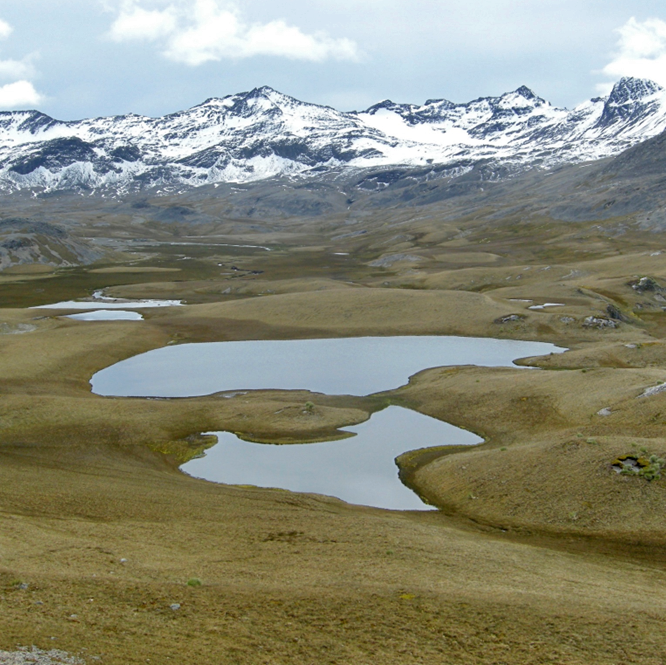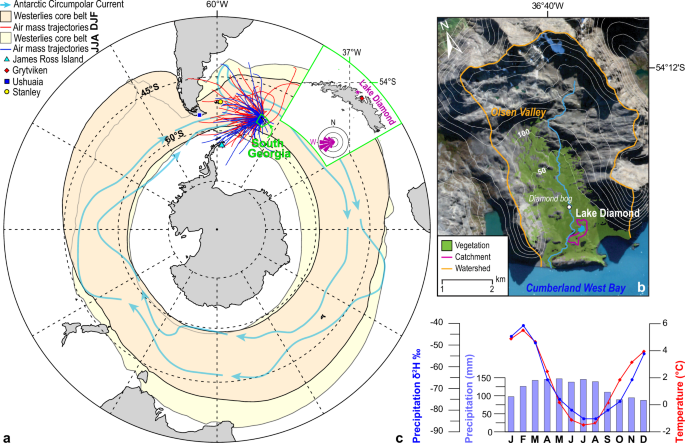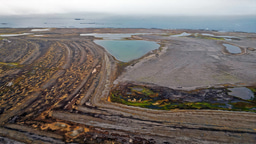Arctic climate change paces Antarctic carbon pump
Published in Earth & Environment
Earth`s Air Conditioner
Fearful sailors call them the roaring forties, furious fifties, and screaming sixties: the Southern Westerly Winds that encircle the Antarctic continent between 40 – 60 degrees latitude. This belt is one of Earth`s most powerful circulation systems and acts as its Air Conditioner. Wind-whipped waves soak up atmospheric CO2 as air bubbles and surface waters mix. It is estimated that this process has stored nearly half the ocean`s inventory of man-made carbon emissions.
Worryingly, there is evidence that the Southern Ocean`s effectiveness as a global carbon pump is reduced by on-going climate change. There are, however, many unknowns as simulations of the foreseeable future disagree on the response of the Southern Westerlies. One of the main reasons is a lack of weather data from this remote region: these are critical to assess if climate models can reproduce observations – a litmus test for their quality.
Fossilized leaf hydrogen
Researchers from the Netherlands, Norway, and the United States have addressed this scientific challenge by looking at evidence from the geological past. Traveling back in time beyond the short period covered by weather data allows us to generate observations from past warm periods that can help us constrain the future. For this study, the researchers relied on lake sediments: layers of mud that are deposited every year, layer upon layer, recording geological history. To extract this information, scientists rely on proxies: biological, chemical, or physical sediment properties capturing changes in climate conditions like wind speed.
Here, the team relied on molecules found in fossilized leaves from a lake on South Georgia – one of the few land masses in the core of the Southern Westerly Winds. The weight of the hydrogen in these molecules gives us an idea about the impact of wind-driven evaporation as lighter hydrogen isotopes are more easily removed by the Southern Westerlies. As a result, the hydrogen of lake water that is consumed by plants and their leaves becomes relatively heavy during particularly evaporative windy conditions. By harnessing the potential of this conceptual framework, the researchers could unravel 7000 years of Southern Westerly Wind history.

Bipolar relations
These new results extend our knowledge of Southern Westerly Wind strength by thousands of years, and reveal a couple of surprises. For example, conditions were remarkably stable until the winds intensified during the past 2000 years. Because very few geological records cover more time, this period is often used as a reference to determine whether on-going changes are truly unrivalled. The new study challenges this approach, by revealing that conditions over the last 2000 years were exceptional rather than normal.
Also, comparing their findings to reconstructions of other aspects of climate change like temperature or sea ice extent, the researchers found that the shift towards windier conditions 2000 years ago marks a major regional climate transition. In their search to understand what drove these changes, they noticed striking similarities between their leaf isotope record and climate change on the other side of the planet – the Arctic. There, temperatures started to drop around 2000 years ago due to a reduction in solar heat reinforced by sea ice growth. This gradual cooling phase lasted until the impacts of man-made warming became apparent.
By observing coupled climate changes in both polar regions, the researchers report real-world evidence that supports an emerging theoretical framework. Our sun does not warm our planet evenly and to balance Earth`s energy budget, excess tropical heat is transferred poleward. This flux is not symmetric as more energy is transported towards the colder hemisphere. Recent work suggests that this causes various planetary ripple effects, including changes in Southern Westerly Wind strength. The new hydrogen isotope data support this notion, by revealing that wind on South Georgia picked up in tandem with Arctic cooling around 2000 years ago.
As the Arctic warms much faster than the global average, these results raise the possibility that this amplified response could also determine the future behavior of the Southern Westerlies. This could have a major impact on their ability to store more man-made carbon emissions.
Follow the Topic
-
Communications Earth & Environment

An open access journal from Nature Portfolio that publishes high-quality research, reviews and commentary in the Earth, environmental and planetary sciences.
Related Collections
With Collections, you can get published faster and increase your visibility.
Geology of the Moon
Publishing Model: Hybrid
Deadline: Jan 31, 2026
Drought
Publishing Model: Hybrid
Deadline: Dec 31, 2025


Please sign in or register for FREE
If you are a registered user on Research Communities by Springer Nature, please sign in